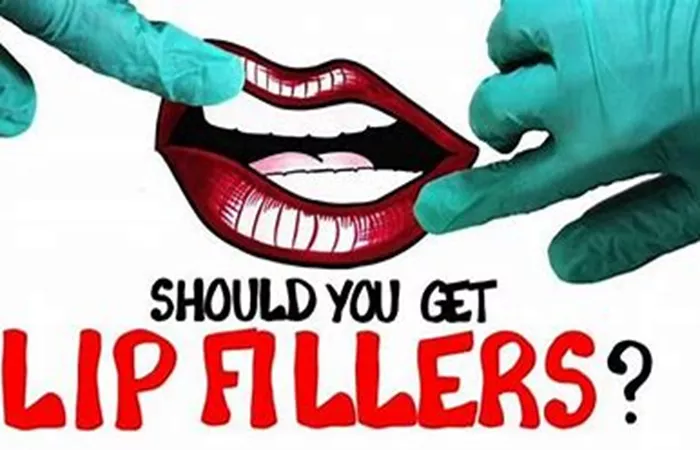Lip allergies can be uncomfortable, unsightly, and sometimes even painful. They can arise from various causes, including contact with allergens, certain medications, or underlying health conditions. As a doctor, I often see patients struggling with lip allergies, unsure of what triggers their symptoms or how to treat them effectively. This article will explore the causes, symptoms, diagnosis, and treatment options for lip allergies, providing a thorough understanding of this condition.
What Causes Lip Allergies?
Lip allergies, also known as allergic cheilitis, occur when the lips react to an allergen or irritant. The immune system mistakenly identifies a harmless substance as a threat, leading to inflammation and other allergic symptoms. Common causes include:
Contact Allergens
Many lip allergies result from direct contact with allergens found in everyday products, such as:
Lipsticks, lip balms, and cosmetics – Ingredients like fragrances, dyes, lanolin, or preservatives (e.g., parabens) can trigger reactions.
Toothpaste and mouthwash – Sodium lauryl sulfate (SLS), fluoride, or flavoring agents (e.g., cinnamon or peppermint) may cause irritation.
Metals – Nickel in lip piercings or dental appliances can lead to allergic reactions.
Foods – Certain fruits (citrus, mango), nuts, or spices may cause lip swelling or itching.
Medications and Oral Products
Some medications or oral hygiene products can contribute to lip allergies, including:
Antibiotics (e.g., penicillin)
NSAIDs (e.g., ibuprofen)
Antiviral or antifungal treatments
Environmental Factors
External factors such as extreme weather (cold, wind, or sun exposure) can worsen lip sensitivity, making them more prone to allergic reactions.
Underlying Conditions
Certain medical conditions may mimic or contribute to lip allergies, such as:
Eczema (atopic dermatitis)
Angioedema (deep tissue swelling)
Autoimmune disorders (e.g., lupus)
Symptoms of Lip Allergies
Recognizing the signs of a lip allergy is crucial for proper treatment. Symptoms may vary in severity and can include:
Redness and swelling – The lips may appear puffy or inflamed.
Dryness and cracking – Allergic reactions can strip moisture, leading to painful fissures.
Itching or burning – A persistent urge to scratch or a stinging sensation is common.
Blisters or ulcers – In severe cases, small fluid-filled bumps or sores may develop.
Peeling or scaling – The skin on the lips may flake off as the reaction progresses.
If swelling extends beyond the lips (e.g., to the tongue or throat), it could indicate a severe allergic reaction (anaphylaxis), requiring immediate medical attention.
Diagnosing Lip Allergies
Proper diagnosis is essential to determine the exact cause of the allergy. A healthcare provider may use the following approaches:
Medical History and Physical Examination
The doctor will review the patient’s symptoms, recent product use, diet, and any known allergies.
Patch Testing
If a contact allergen is suspected, patch testing can identify specific triggers. Small amounts of common allergens are applied to the skin to observe reactions.
Blood Tests
In some cases, blood tests (e.g., IgE antibody tests) may help detect systemic allergies.
Elimination Diet
If food allergies are suspected, eliminating potential triggers and reintroducing them systematically can pinpoint the culprit.
Treatment Options for Lip Allergies
Once the cause is identified, treatment focuses on relieving symptoms and avoiding future exposure to allergens.
Immediate Relief Measures
Cold Compress – Applying a cold, damp cloth can reduce swelling and soothe irritation.
Hydration – Drinking plenty of water prevents further dryness.
Avoid Licking Lips – Saliva can worsen irritation by stripping natural oils.
Topical Treatments
Hypoallergenic Lip Balms – Fragrance-free, petroleum-based balms (e.g., Vaseline) help lock in moisture.
Corticosteroid Creams – Hydrocortisone or prescription-strength steroids can reduce inflammation.
Antihistamine Gels – Products containing diphenhydramine may relieve itching.
Oral Medications
Antihistamines (e.g., cetirizine, loratadine) help control allergic reactions.
Corticosteroids (e.g., prednisone) may be prescribed for severe swelling.
Natural Remedies
Some patients find relief with natural treatments, though scientific evidence varies:
Aloe Vera – Soothes inflammation.
Coconut Oil – Provides moisture and has mild anti-inflammatory properties.
Honey – Acts as a natural humectant and may promote healing.
Preventive Strategies
Read Product Labels – Avoid lip products with known irritants like fragrances or harsh chemicals.
Patch Test New Products – Apply a small amount to the inner forearm before using on lips.
Protect Lips from Weather – Use SPF lip balms in the sun and cover lips in cold wind.
When to See a Doctor
While mild lip allergies can often be managed at home, medical attention is necessary if:
- Symptoms persist despite treatment.
- Swelling affects breathing or swallowing.
- Blisters or open sores become infected (signs include pus, increased pain, or fever).
Conclusion
Lip allergies can be frustrating, but with proper care, they are manageable. Identifying the trigger is the first step toward effective treatment. By using hypoallergenic products, following medical advice, and adopting preventive measures, patients can reduce flare-ups and maintain healthy, comfortable lips. If symptoms are severe or persistent, consulting a healthcare provider ensures appropriate diagnosis and treatment.
Understanding the underlying causes and available treatments empowers individuals to take control of their lip health, preventing unnecessary discomfort and complications. Always remember—when in doubt, seek professional medical guidance to ensure the best care for your condition.
Relative topics:
- 7 Ways to Lower Your Risk of Getting the Flu: Essential Tips for Protection
- 7 Common Early Flu Symptoms: Recognizing the Signs Early
- 6 Drugs to Relieve Common Cold Symptoms

